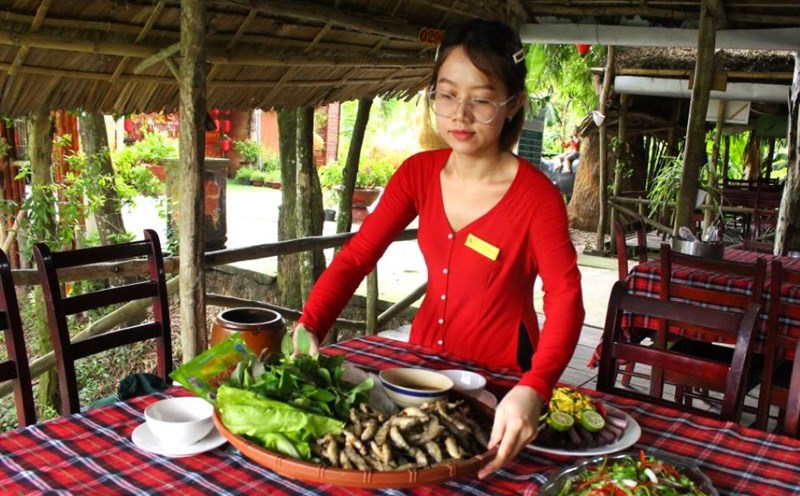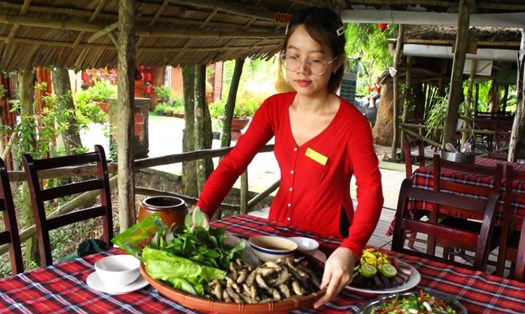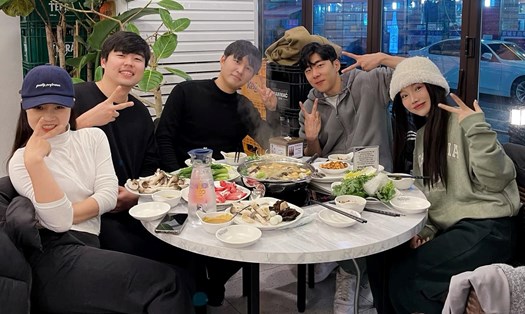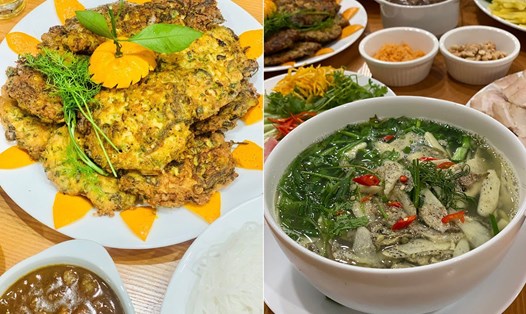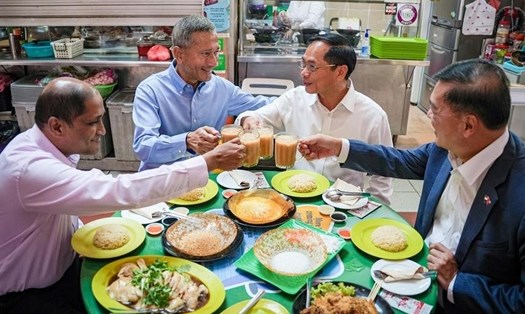Cleanliness at the source
Whether it is Ha Noi paint, or a strange dish that has never been known - that rice tray is contributed by the most simple products of the mountains and forests and the heart of the whole village for the journalists.
I heard the name of AUR village since 2004 - when I attended the groundbreaking ceremony of Ho Chi Minh Road - the section turning to Truong Son Dong. That year, Mr. B'riu Liek also held the office of Hien District, of the old Quang Nam Province. Mr. Lic himself told me about an isolated village hidden in the depths of Truong Son, but that preserves the cultural values of Co Tu very well. However, it was not until 10 years later that I set foot in AUR.
The journey to AUR is a real challenge. No concrete roads, no phone signal, only winding paths through high mountains and deep valleys. At that time, the village had only 14 households with 87 people, all of whom were Co Tu. AUR's history is also full of ups and downs.
Living in the upstream of the Bach Ma range (Hue), through many generations of nomads, they have "dug up" to the land of Quang Nam. After 1975, when the administrative boundary was established, they were asked to return to their old hometowns but could not integrate and dragged together to the sacred forest.
AUR used to be an "unknown" village, forgotten until it was "rediscovered" by Tay Giang district in 2003 and officially became a village of A Vuong commune. Since then, this remote village has received special attention from the government, but the distance and obstacles are still a barrier.
At noon of the second day of forest travel, we arrived at AUR village. Fatigue and hunger. The village elders of Ating Avy invited the Goil (commune activity house) to receive guests. So many interesting things about the village make us excited. It was too late at noon, the village elders invited rice.
All at home, the women and mothers personally cooked the tray, each house had a dish. This house has a plate of dried frog Hong on the stove, fragrant with the smoke. The other family contributed a pot of cooked cassava soup with the freshly caught stream fish. Children are brought back a handful of freshly picked ripe coriander by the stream bank...
Everything was cleaned, simple but sincere, dipped in green chili salt, passion fruit (growing naturally in the forest) and crushed with the characteristic spicy hand of the Co Tu people... We ate deliciously and were full in the quiet space of the mountains and forests. That meal becomes a warm, unforgettable memory because of the unwavering hospitality, purity and purity of a community towards strangers.
Sustainable development under the forest canopy
After many years of visiting the village, I still do not give up worrying. We cannot let the people of AUR village live in deprivation and backwardness forever, but on the other hand, the massive development, lacking orientation, risks erasing the unique cultural identities, the "soul" that makes the land attractive.
In recent years, both the ancient Quang Nam government and non-governmental organizations have made efforts to find a solution to this problem. Many community tourism projects have been implemented, such as the International Labor Organization (ILO) project to reduce poverty through tourism development. Homestay models are supported, helping people renovate their homes to welcome guests, both earning more income and having the opportunity to interact. Many traditional craft villages such as brocade weaving and weaving have been restored, both for performances and for selling products.
However, this road is not flat. In reality, many models are automatically dissolved when the project's funding is exhausted. Bo Hong community tourism village (Song Kon commune) is an example. Once an attractive destination with hair rental houses invested in modern interior but still environmentally friendly, but when the business unit operated rigidly, turning it into its own product, locking hair rental doors for stray customers, this place gradually lost its vitality and community connection. Or the image of Co Tu girls wearing modern jeans sitting selling traditional brocade fabrics in Zara village (in Nam Giang) is a sad cultural difference.
The story of preserving culture to develop tourism and improve the lives of ethnic minorities in western Da Nang in particular and the Truong Son range in general is still a vicious cycle. How to develop the economy without losing identity? How to "keep the soul" of villages like AUR, so that it can improve people's lives... Otherwise, the "love meals" will be just a nostalgic story.

